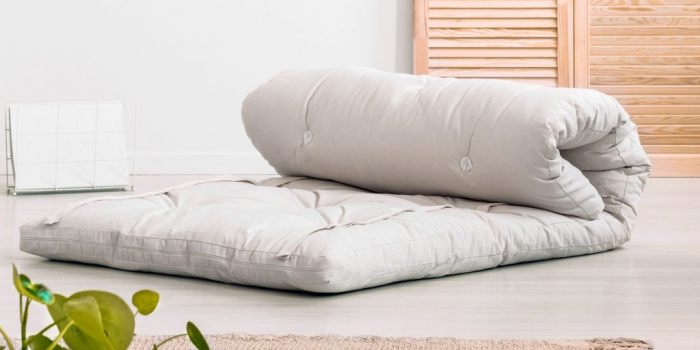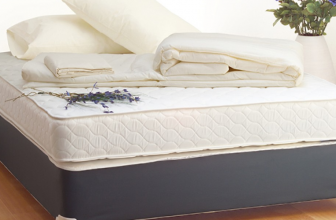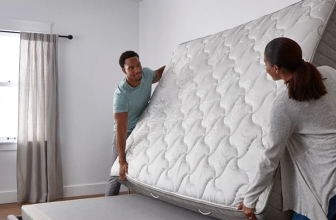Brief: How To Clean Futon Mattress
- Introduction to Cleaning Futon Mattresses:
- Purpose: Regular cleaning is essential for maintaining a futon’s hygiene and longevity.
- 7-Step Cleaning Process:
- Rotate the Mattress: Disassemble and flip the mattress to ensure even wear.
- Remove Surface Stains: Use household solutions for minor stains.
- Deodorize: Use baking soda to absorb smells and vinegar for hard water residue.
- Air Out the Mattress: Let the mattress breathe to remove trapped odors.
- Vacuum All Surfaces: Thoroughly clean to remove debris and allergens.
- Care for the Frame: Regularly clean the frame and fabric covering.
- Protect with a Futon Cover: Use a high-quality cover to shield from mildew and pests.
- Cleaning Futon Mattress of Cat Urine:
- Initial Cleaning: Use soap and warm water for visible stains.
- Odor Removal: Utilize sunlight, air out, or sprinkle baking soda and vacuum.
- Deep Cleaning: Consider disassembling and washing in a machine if possible.
- FAQ:
- Best Cleaning Method: Mild detergent with warm water.
- Cleaning Frequency: At least twice a year.
- Stain Removal: Spot-clean with a mild solution and air dry.
- Drying Method: Air-dry thoroughly; avoid using a dryer.
- Cleaning Precautions: Refrain from using bleach or harsh chemicals.
- Vacuum Attachments: Use a soft-bristled brush attachment.
- Maintenance Products: Mattress covers and protectors are recommended.
- Conclusion:
- Cleaning and maintaining a futon mattress is crucial for ensuring its longevity and comfort. Regular rotation, stain removal, deodorizing, and thorough vacuuming are key steps in the cleaning process. For specific issues like cat urine, more intensive methods may be required. Using a futon cover can provide added protection. It’s important to avoid harsh chemicals and to dry the futon properly to preserve its quality. Regular cleaning and maintenance not only enhance the futon’s lifespan but also ensure a healthy sleeping environment.
A futon mattress is an excellent option for someone who wants a sofa bed or an extra bed at their apartment but doesn’t want to spend a lot of money. Futons are standard pieces of furniture in Japan and China, but they’ve also become popular in North America and Europe as well.

However, many people don’t realize that futons need to be cleaned occasionally to ensure that they’re safe for use–and not just dirtier than most other mattresses. If you’re wondering how to clean your futon mattress the right way, this article can help!
How To Clean Futon Mattress: 7 Easy Steps
Before you start taking care of your bed, it’s important to know how to clean a futon mattress. Even though a futon is not technically a mattress, it will take some effort to get it ready for use.
Rotate The Mattress
The first step in cleaning your futon mattress is to take the frame apart so that you can flip it over and then reassemble the bed frame correctly. Since this takes time and energy, consider buying an attachment for your vacuum so that you can do this easily. Your cleaner should allow you to untie the strings that hold the mattress in place with ease.
Once the mattress is off, you’ll want to flip it over. You can do this with a quick move of your hand, or perhaps just by lifting it on its side. Just make sure that you rotate it before throwing away any loose sheets and stuffing inside it.
Get Rid Of Surface Stains
The next step in cleaning your futon mattress is to get rid of any minor stains and surface dirt that may be on the bed frame itself. Once again, there are ways to do this easily with some basic solutions from your kitchen or store, or perhaps even from your local hardware store or DIY shop, to get rid of any unavoidable stains.
Deodorize
It’s helpful to understand that some smells may be difficult or impossible to remove from your futon mattress. Whether your futon gets used as a couch or as a bed, it will expose some smells that are hard for you to cover up.
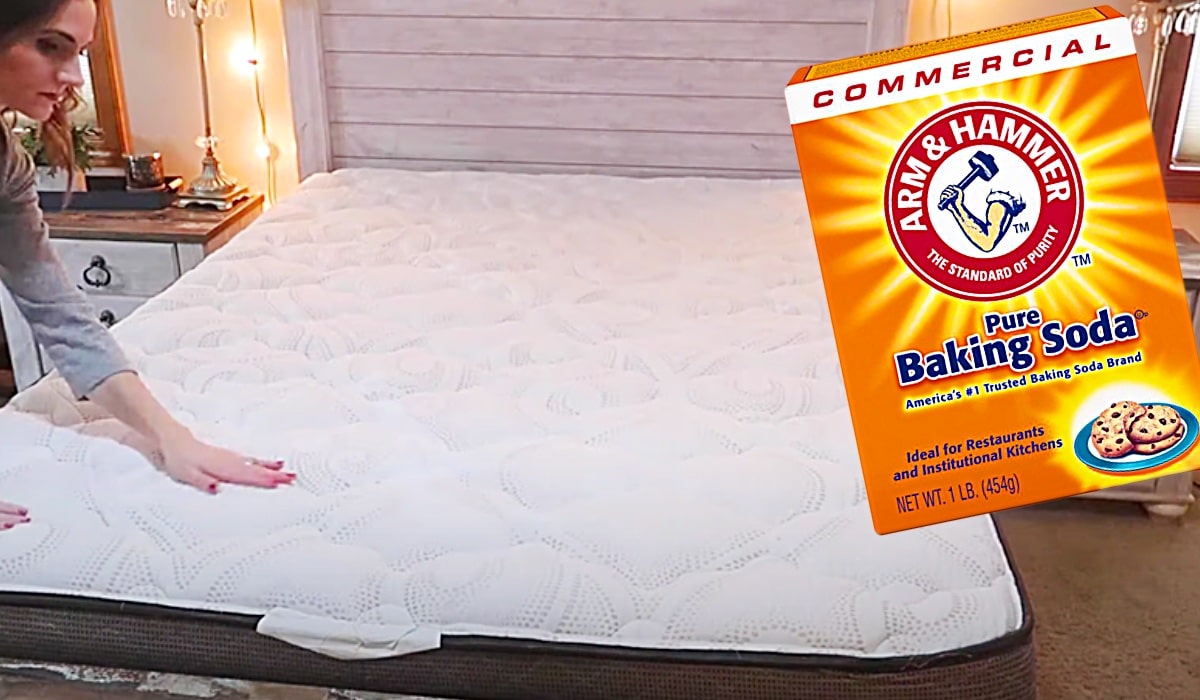
If you notice a gross smell coming from the futon itself, it’s time to use deodorizers and fragrances to help the problem. Sprinkling baking soda on the mattress is one way to absorb smells, while vinegar can get rid of soap scum or hard water residue that may be hanging around on the frame itself.
Air Out The Mattress
Another step to cleaning your futon mattress is letting it air out for a few hours. This will help to remove any smells that are present on or inside of the futon itself, as well as allowing you to check for any loose pieces of fabric or stuffing that may be missing inside or outside of the mattress.
Ensure that you check out all sides and parts of the mattress before you put it back together because you can never know where things may have been hiding.
Vacuum All Surfaces
After letting the mattress dry out a little bit, it’s time to vacuum up everything else that’s visible to clean your futon mattress better. This includes things like dead bugs, lingering cat smells, and other particles that you accidentally bring into the bed.
To wash large items out of the futon mattress, you can use a vacuum with a hand attachment to suck up the debris that may be harder to reach.
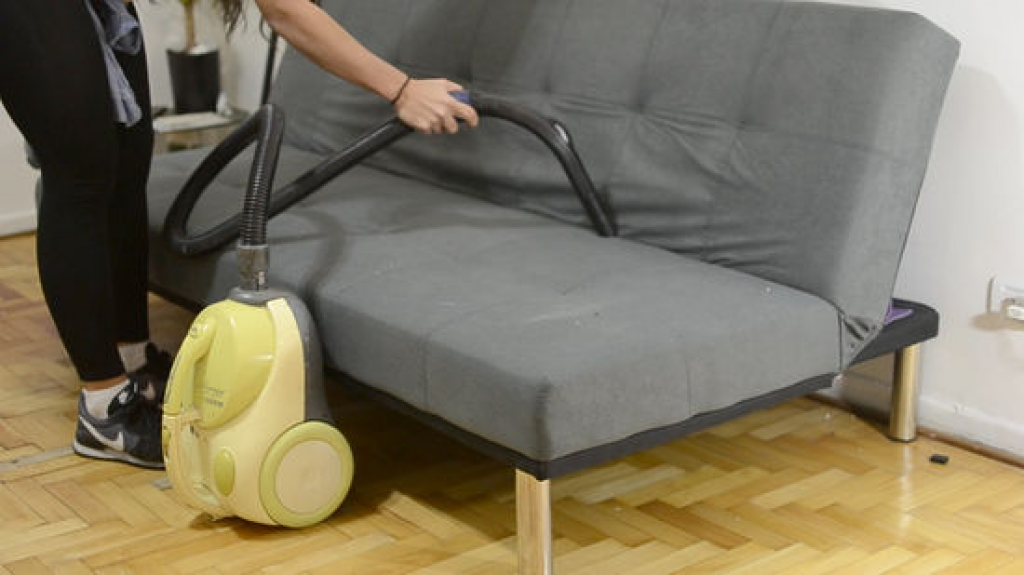
Care For The Frame
Another part of cleaning your futon mattress concerns maintaining the frame itself, so make sure that you use it as often as it’s needed from time to time to keep it in good working condition and safely clean. You’ll want to clean the frame and the fabric covering it to keep it looking nice for guests.
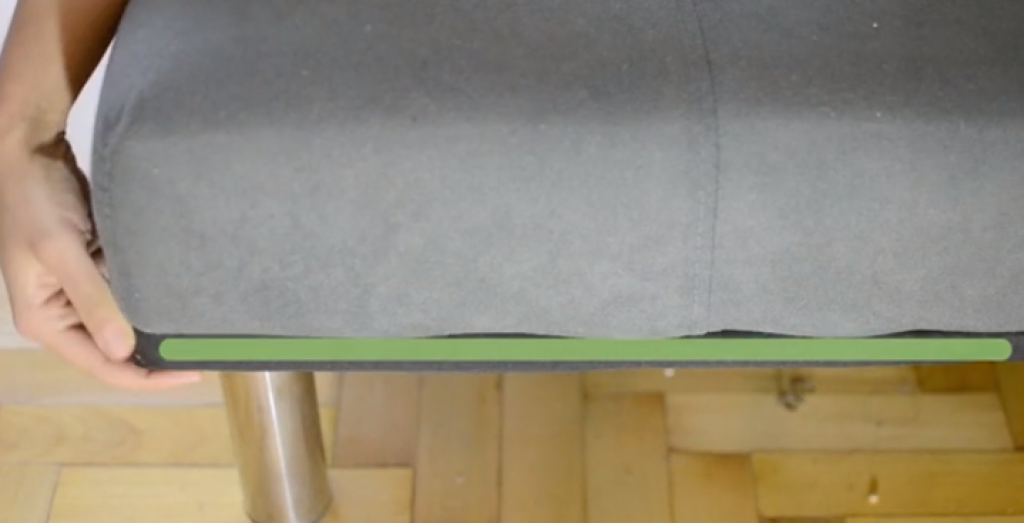
Protect It With A Futon Cover
Last but not least, you’ll want to protect your futon mattress with a futon cover when it’s not being used. This can prevent things like mildew from growing on your futon or maybe even make bugs run away if you put enough repellent on the cover itself.
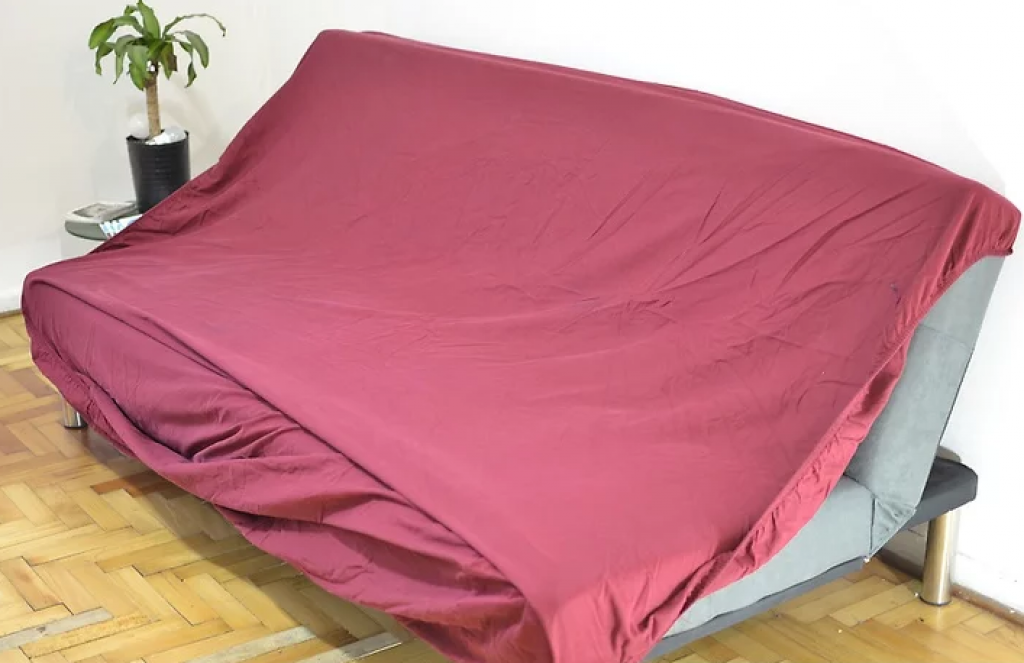
Using a high-quality futon cover is essential, especially since these sorts of mattresses are expensive compared to other types of furniture, so don’t skimp out on protecting your futon!
How To Clean A Futon Mattress Of Cat Urine
If you’re cleaning your futon mattress regularly, the urine smell may have been lingering on the bed for a while – possibly since your cat urinated on it. It’s safe to assume that this smell isn’t going to leave your futon all on its own, though. Once your pet has urinated on a mattress, it’s going to be challenging to get the smell out of there completely.
To begin with, use soap and warm water to clean off any visible urine stains from the futon itself. This will at least give you an excellent place to start, and it’s important to remove any urine residue rather than trying to cover this up completely. If the cat or dog that urinated on the mattress used too much force when going to the bathroom, try using an enzyme-based cleaner in addition to everything else.
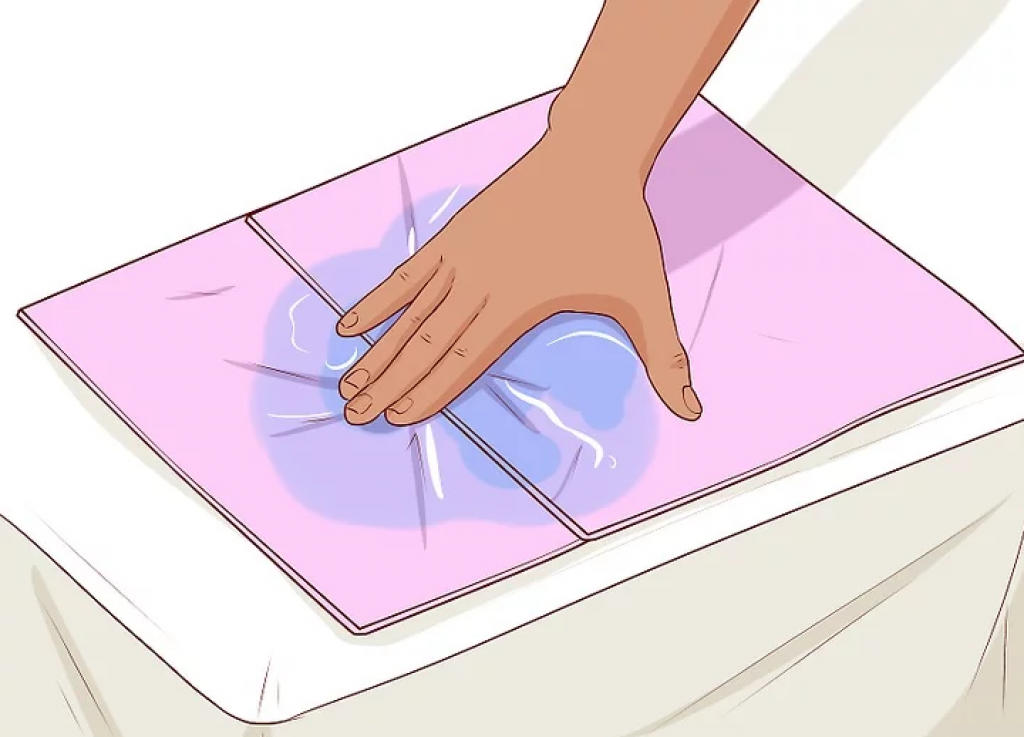
The next step is removing odors from the mattress as well. You may be able to get rid of most odors by placing this futon in a room with sunlight or by simply letting it air out for a few hours afterward. You can also sprinkle baking soda on the mattress and then vacuum it up later.
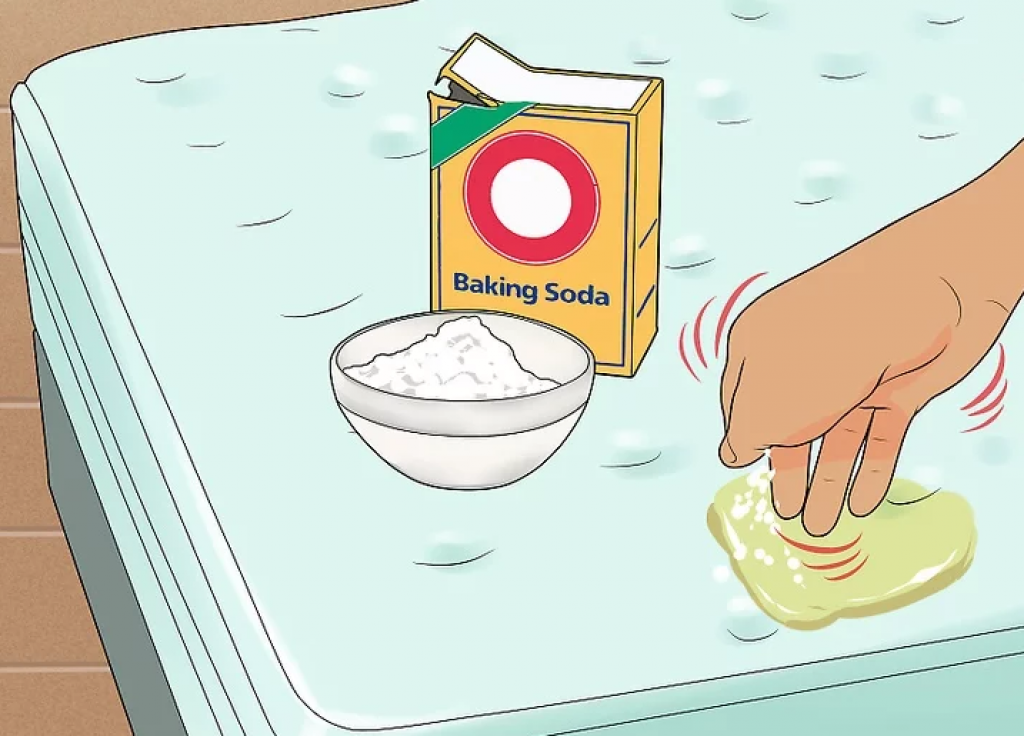
Sometimes, it may be difficult to remove cat odors from your futon mattress completely. If this is the case, there are some other practical approaches that you can follow instead of trying to clean the odor out completely – such as cleaning the entire futon frame and even looking at the possibility of taking the mattress apart and dumping it in a washer for a few hours.
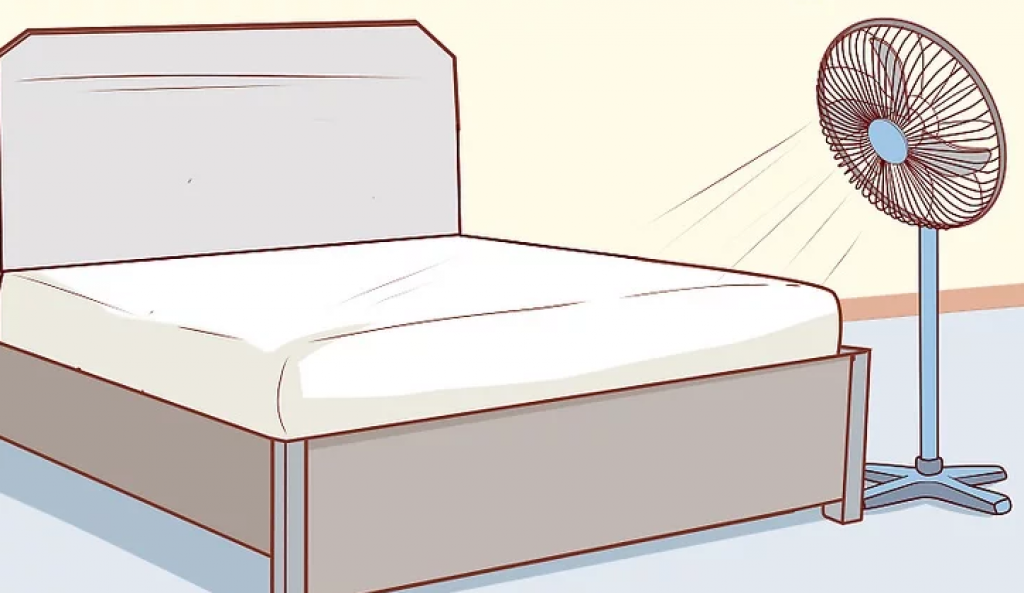
FAQ
What is the best way to clean a futon mattress?
It is best to use a mild solution of detergent and warm water to clean your futon mattress.
How often should a futon mattress be cleaned?
Depending on how often your futon is used, it should be cleaned at least twice a year.
What should I do if my futon mattress is stained?
If your futon is stained, spot-clean the area with a mild detergent and water solution. Allow the area to dry completely before using the mattress.
How should I dry my futon mattress after cleaning it?
After cleaning your futon mattress, make sure to thoroughly air-dry it. Do not use a dryer as this could damage the mattress.
Are there any other special instructions for cleaning a futon mattress?
Avoid using bleach or harsh chemicals when cleaning your futon mattress, as this could cause discoloration or other damage.
What should I use to clean a futon mattress?
You can use a mixture of warm water and mild detergent on a futon mattress.
How often should a futon mattress be cleaned?
A futon mattress should be cleaned at least twice a year.
What should I do if my futon mattress is stained?
If your futon mattress is stained, spot-clean the area with a mild detergent and water solution. Allow the area to dry completely before using the mattress.
How should I dry my futon mattress after cleaning it?
After cleaning your futon mattress, make sure to air-dry it thoroughly. Do not use a dryer, as this could damage the mattress.
Are there any other special instructions for cleaning a futon mattress?
When cleaning a futon mattress, be sure to use gentle techniques such as scrubbing and blots. Avoid using harsh chemicals or bleach, as this could cause discoloration or other damage.
What vacuum attachments should I use to clean a futon mattress?
You should use a soft-bristled brush attachment for the vacuum cleaner when cleaning the surface of a mattress.
What other products should I use to maintain a futon mattress?
You should use mattress covers and mattress protectors to keep a mattress clean and free from dust and dirt.
What type of mattress is best for people with allergies?
Memory foam mattresses are best for people with allergies because they are hypoallergenic and do not harbor dust mites or other allergens.
How often should I use a mattress protector?
It is recommended to use a mattress protector on your mattress at least once every six months or when the protector becomes worn or soiled.
Are there any other tips for cleaning a mattress?
Make sure to rotate your mattress regularly and use a dehumidifier to keep it free from dust and moisture. It is also important to vacuum the mattress regularly to keep it free from dust mites and other allergens.

